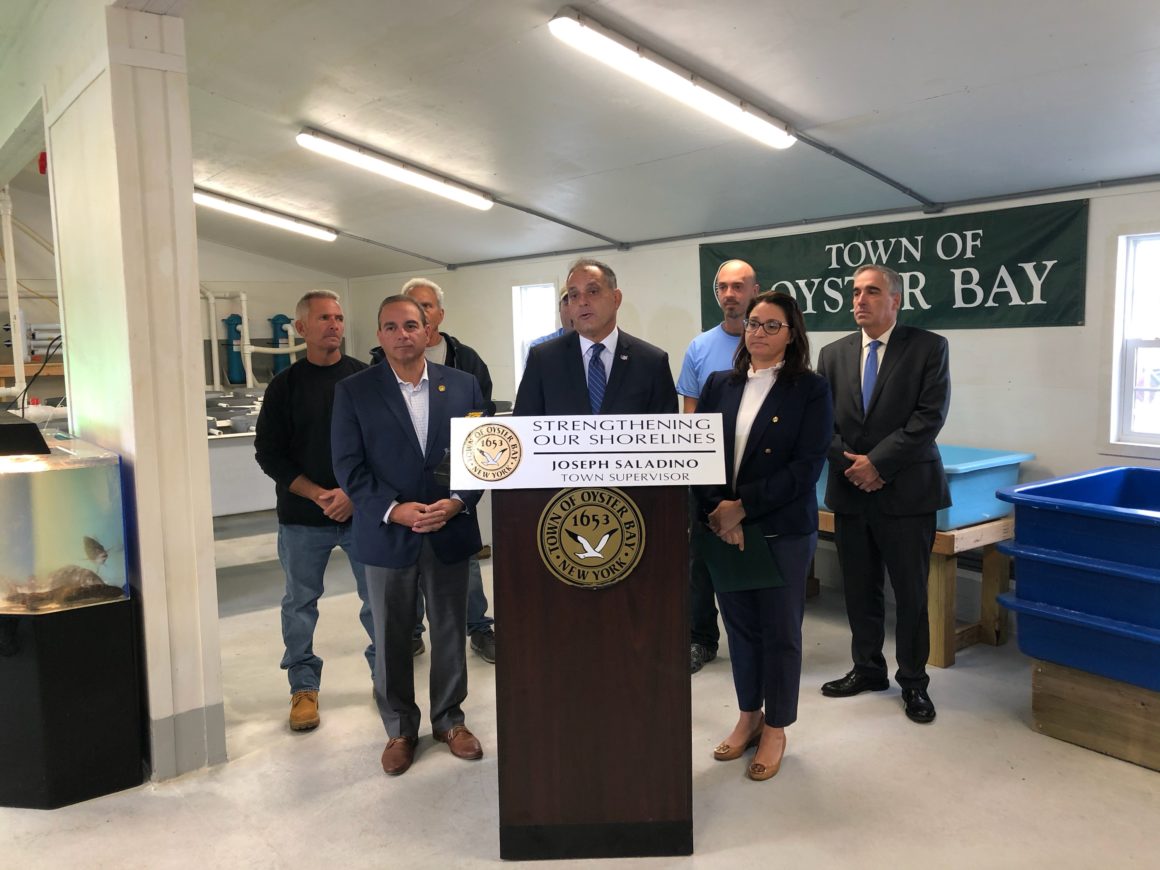Oyster Bay Town Supervisor Joseph Saladino, Councilwoman Michele Johnson and Councilman Steve Labriola joined with the North Oyster Bay Baymen’s Association (NOBBA) to officially open a new Shellfish Hatchery in Oyster Bay. This initiative was launched with the goal of populating Oyster Bay Harbor with two million additional clams and oysters which will generate both economic benefits for the shellfish industry and environmental benefits that include improved water quality as each shellfish filters gallons of water per day. The Town and NOBBA have partnered on clam and oyster seeding of the harbor for decades in an effort to improve the water quality, resulting in Oyster Bay Harbor boasting some of the cleanest water on Long Island. Supervisor Saladino stated, “From cleaning up the Grumman-Navy Plume to enhancing recycling initiatives, my administration has advanced environmental priorities that benefit our residents and local communities. This new shellfish hatchery will improve the water quality in our bay and deliver economic benefits of an improved shellfish industry by boosting the number of certified clamming areas that support more clammers and baymen.” The Town Department of Environmental Resources acquired a prefabricated 950 square foot building to house specialized upwelling tanks and algae tanks that allow the growing of clams and oysters from seed. The project is funded, in part, by Town resources from the Bay Management Fund – an account that is financed by a percentage of the license fees collected by the issuance of commercial shellfish licenses. The Town is currently amending its existing New York State Department of Environmental Conservation (DEC) Shellfish Permits. Establishment of this new shellfish hatchery will qualify the Town of Oyster Bay to pursue grants offered by the New York State Department of Environmental Conservation (DEC) to conduct a feasibility study that would determine what improvements to an existing shellfish hatchery would be beneficial to a water body, then qualifying the Town to obtain additional funding for the recommended hatchery improvements. “I am proud to lead this environmental initiative that will preserve the quality, resiliency, and natural beauty of our local waterways for generations to come,” Councilwoman Johnson said. “I thank the North Oyster Bay Baymen’s Association for partnering with the Town on such an important initiative. Protecting our natural assets is a top priority and by restoring and reseeding our shellfish populations, we not only strengthen the local economy, but also ensure we are working to keep our waters clean.” “We are so fortunate to have dedicated and industrious partners in our efforts to maintain the water quality of our beautiful harbor,” Councilman Labriola added. “These programs help raise awareness of the importance of stewardship of our local waters, and they help bolster the local economy. It really exemplifies how communities benefit when government works with local organizations to do what’s best for our quality of life.” The Town of Oyster Bay completed a Clam Density Study this past fall to obtain additional analysis on the health and population of shellfish in the Oyster Bay Harbor. Last analyzed in 2013, this study will provide a baseline to help determine the effectiveness of the new shellfish hatchery and other seeding projects. The Town and NOBBA currently maintain a FLUPSY (Floating UPwelling SYtem) in the harbor to grow clams and established “grow-out” areas to allow the clams to mature prior to final seeding. Additionally, the Town of Oyster Bay purchases two million seed clams annually for placement in the bay. Once successful, the Town will expand its clam and oyster seeding operation from the hatchery to the south shore where the Town already works in partnership with other municipalities, the DEC, Cornell Cooperative, Stonybrook University and the New York Department of State to improve water quality in the Great South Bay.
Town Opens New Hatchery to Improve Water Quality Boost Local Shellfish Population

